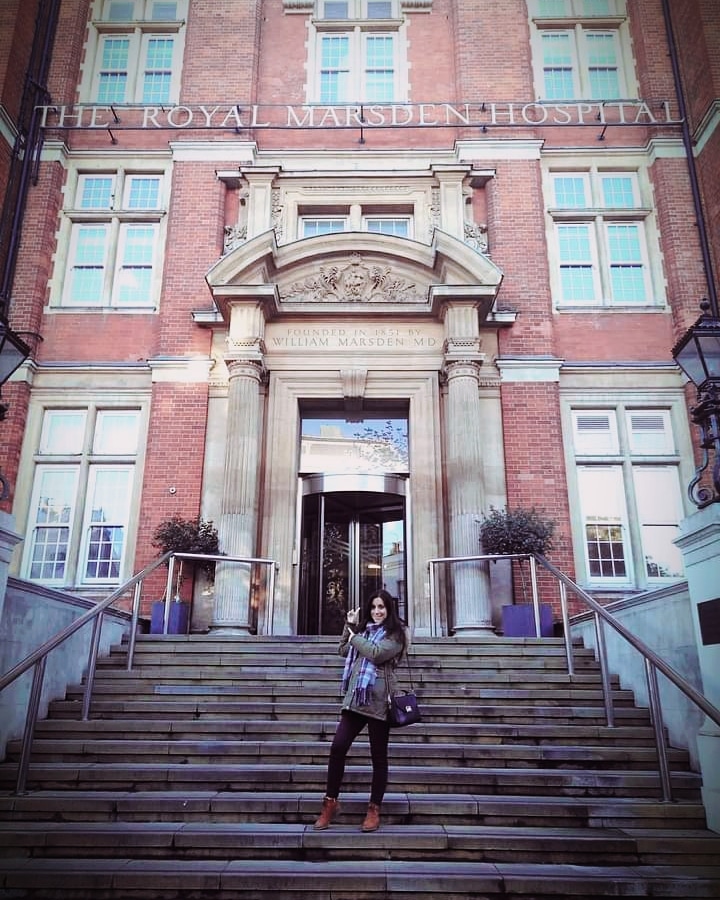The story of Mariana
Four years ago I was diagnosed with Epithelioid Hemangioendothelioma (EHE) in the liver, an ultra rare cancer with a prevalence of 1 in 1 million. At the time of my diagnosis, my former team of doctors, in Portugal, told me that they had to google my diagnosis and that I was the first case they had ever known…which was not very reassuring and left me with more questions than answers.
I decided to start self-advocating and took the time to get to know my rights as a rare disease patient. That’s when I travelled to the UK to seek medical assistance and treatment, which was not available in my home country. This picture was taken in 2017 when I first visited the Royal Marsden Hospital, one of the few hospitals in the world where we can find an EHE specialist and where I finally felt supported and as if I finally had more control of my health.
But the reality is that there is nothing “controlable” about EHE. In fact, “unknown” would be the right word to describe the last 4 years of my life. I think EHE defies all the “cancer laws”. Can you imagine being told you have cancer and that the best treatment for you is…no treatment at all? That’s what a majority of EHE patients face, they are put on the “wait and watch approach” where we will have scans done every 3 months to remain vigilant of the disease and as long as there is no growth, we do nothing. We wait for the tumors to make the first move and that’s when we attack them as it is believed that aggressive treatments while the disease is indolent/dormant may do more harm than good. For other patients, the disease can be progressing right from the beginning or turn aggressive after being stable for many years, with no warning. In addition, there is no established treatment protocol, with potential treatment options going from traditional chemo and immunotherapy to medication used to treat hypertension or even diabetes. A lot of literature is outdated and incorrect, research is scarce and there is no consensus on mortality and survival rates although it’s believed that there is a high recurrence rate, with an estimated 30% probability of recurrence for those patients who have a liver transplant done (yes, cancer cells can grow back even on a new liver). There are patients who have been living with EHE for as long as 20 years, with several tumors but no symptoms, who never underwent any treatment and their only option is to just keep living with this time bomb inside them, which may never even explode.
Today I am thinking of all the rare disease patients who have to wait several months or even years for an accurate diagnosis, who have no access to proper and specialised medical care, those who don’t have the much needed psychosocial and economical support to deal with such complex diseases. We may often feel lost and unseen, but together we are many and together we are stronger.
I would love to connect with other rare disease patients. Please feel free to reach out to me through instagram at @marianamfcoutinho
